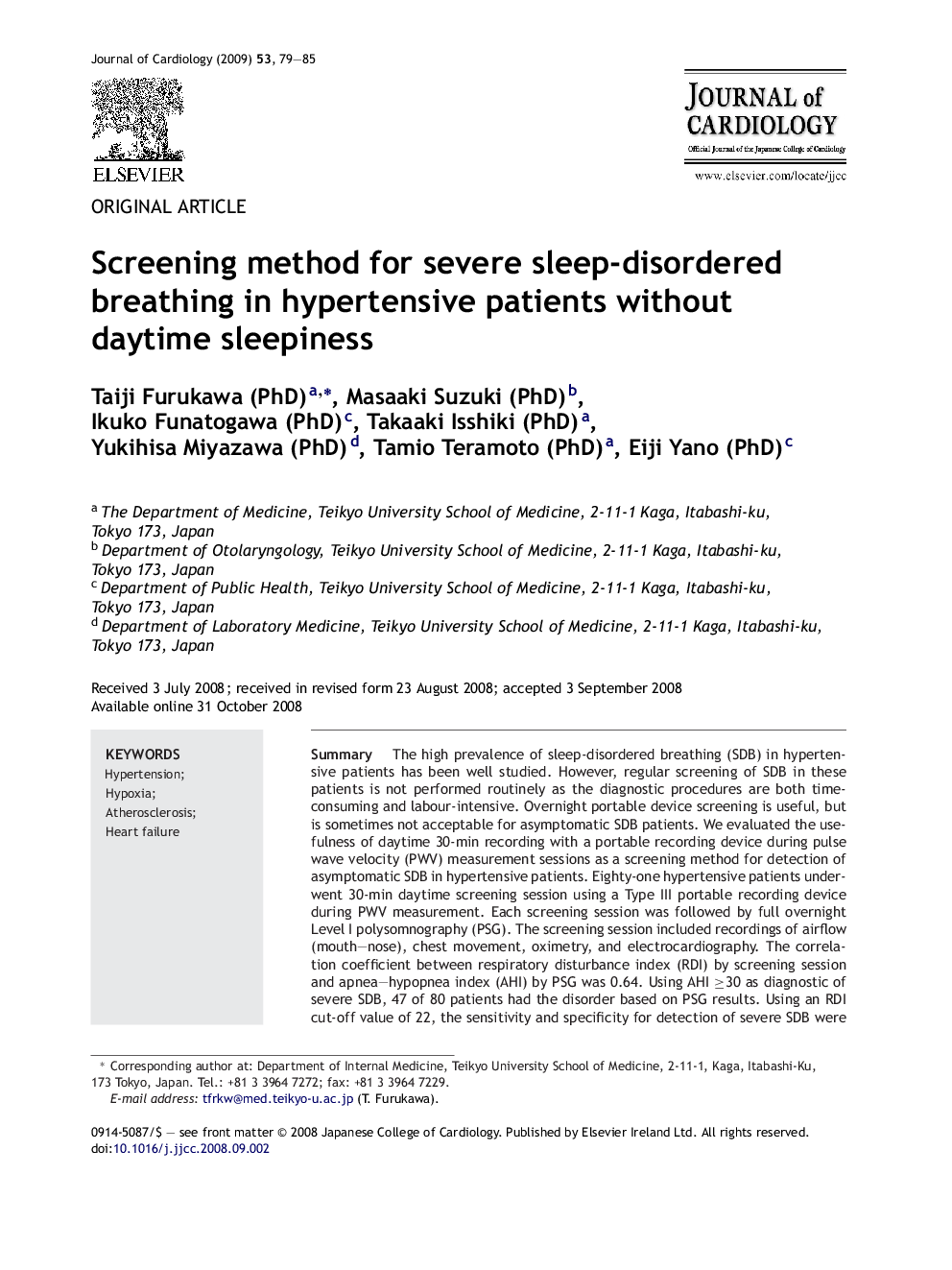| Article ID | Journal | Published Year | Pages | File Type |
|---|---|---|---|---|
| 2963788 | Journal of Cardiology | 2009 | 7 Pages |
SummaryThe high prevalence of sleep-disordered breathing (SDB) in hypertensive patients has been well studied. However, regular screening of SDB in these patients is not performed routinely as the diagnostic procedures are both time-consuming and labour-intensive. Overnight portable device screening is useful, but is sometimes not acceptable for asymptomatic SDB patients. We evaluated the usefulness of daytime 30-min recording with a portable recording device during pulse wave velocity (PWV) measurement sessions as a screening method for detection of asymptomatic SDB in hypertensive patients. Eighty-one hypertensive patients underwent 30-min daytime screening session using a Type III portable recording device during PWV measurement. Each screening session was followed by full overnight Level I polysomnography (PSG). The screening session included recordings of airflow (mouth–nose), chest movement, oximetry, and electrocardiography. The correlation coefficient between respiratory disturbance index (RDI) by screening session and apnea–hypopnea index (AHI) by PSG was 0.64. Using AHI ≥30 as diagnostic of severe SDB, 47 of 80 patients had the disorder based on PSG results. Using an RDI cut-off value of 22, the sensitivity and specificity for detection of severe SDB were 86.1% and 64.5%, respectively. Daytime 30-min recording with a portable device for apnea detection during PWV recording is useful for screening of asymptomatic severe SDB in hypertensive patients.
